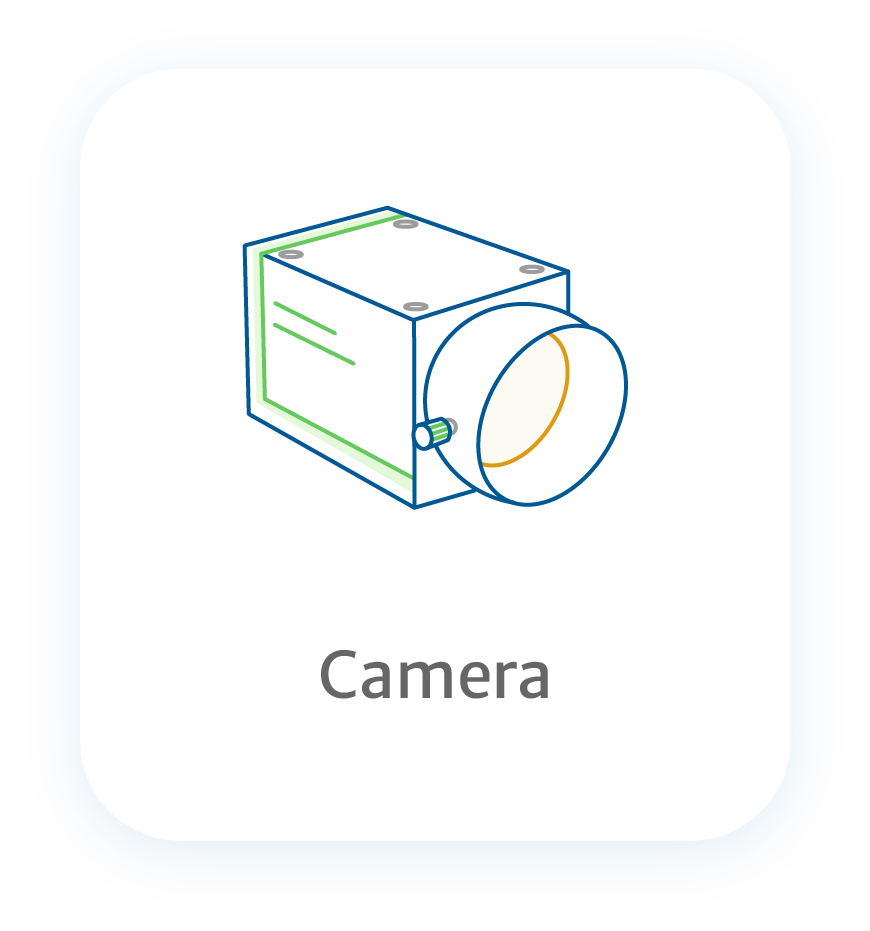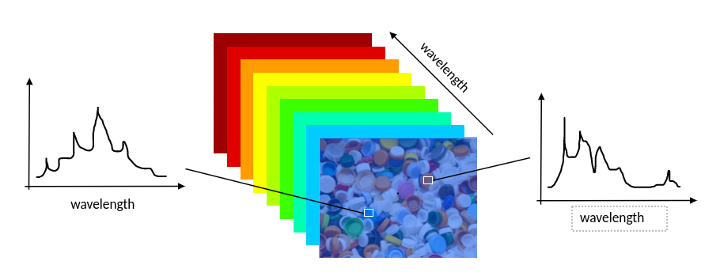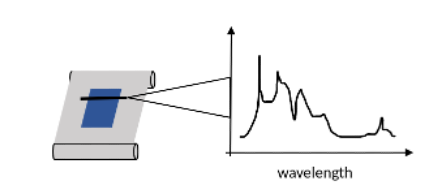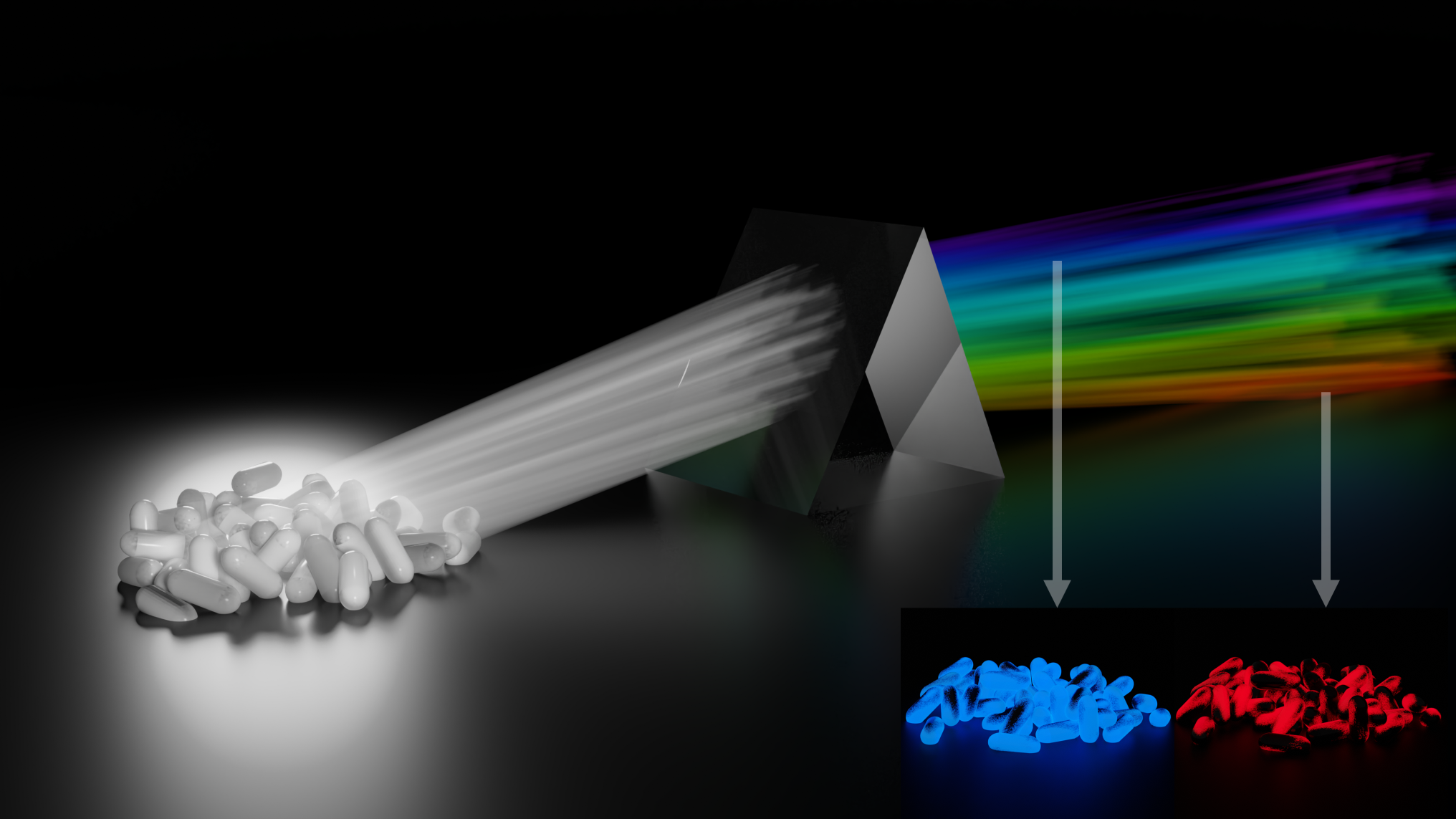
A hyperspectral imaging system collects light without restricting it to RGB channels, thereby recording far more detailed spectral information. Because different materials have unique spectral signatures, these can be detected and highlighted in the image with much higher contrast compared to conventional imaging or visual inspection. Light from outside the visible wavelengths can be measured too, producing images with information that the naked eye cannot see.
How does hyperspectral imaging work?
While some specialist measurement techniques can be used, hyperspectral imaging is generally done using two approaches:
Spectral scanning:
A stack of images is captured using a monochromatic (greyscale) camera while the illumination wavelength is swept through a range. Each image in the stack is taken at a different wavelength.

Line or point scanning:

With either method, every pixel in the resulting image contains hyperspectral information, rather than a single RGB color or intensity value. Therefore, you can look for unique spectral signatures in every pixel and use them to highlight different objects in the scene. The rich data in a hyperspectral measurement can also be ideal for machine learning.

Examples of where hyperspectral imaging is used
There are many areas where this powerful imaging technique can help. For example, hyperspectral imaging is used in plastics recycling, where different plastics have distinct reflectance spectra. It also has applications in pharmaceutical and food industries to highlight defects in vegetables, in production lines, and differences in chemical compositions of drugs. In medicine, it can highlight damaged tissue and in agriculture it can measure crop health and plant water content.
DVel have engineers with expertise in hyperspectral imaging among many other measurement techniques. We can look at anything you want to measure and suggest appropriate techniques for your needs. Get in touch with us if you want to know more!
By Graham Triggs-Ramm, Measurement Specialist DVel

Linus Amoli
Sales
